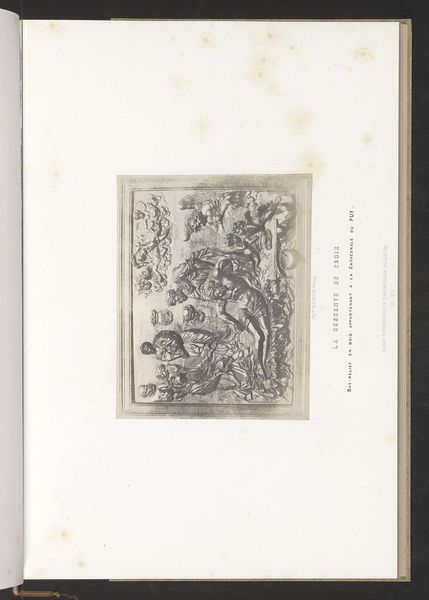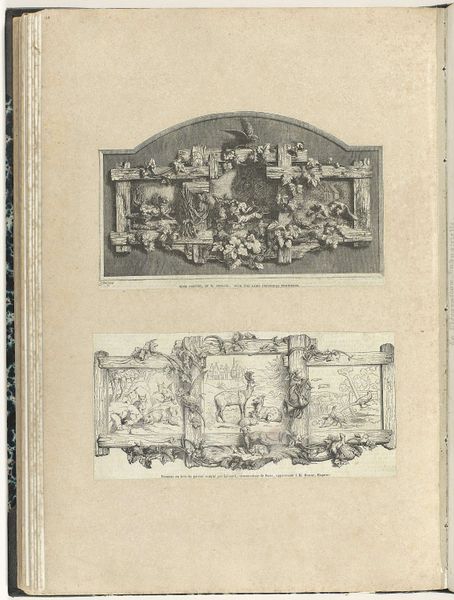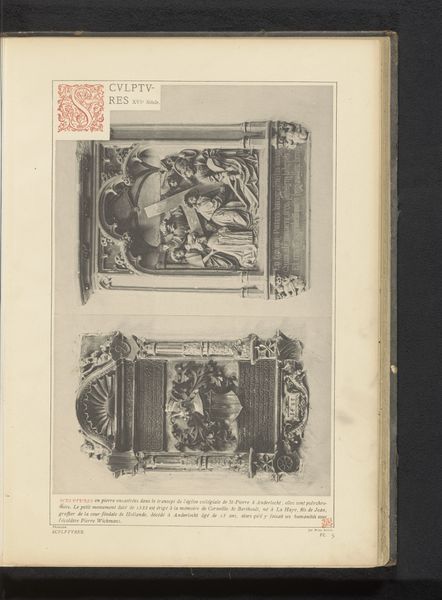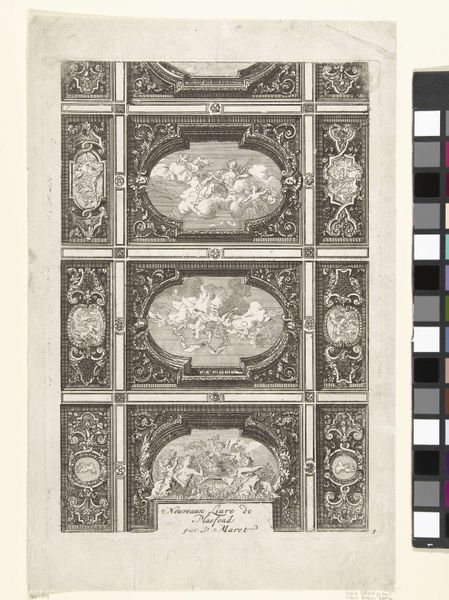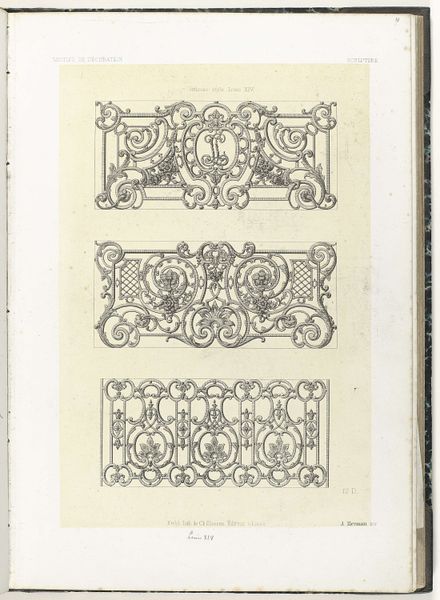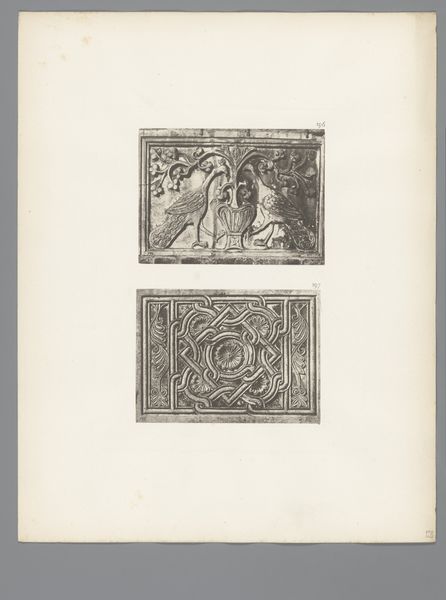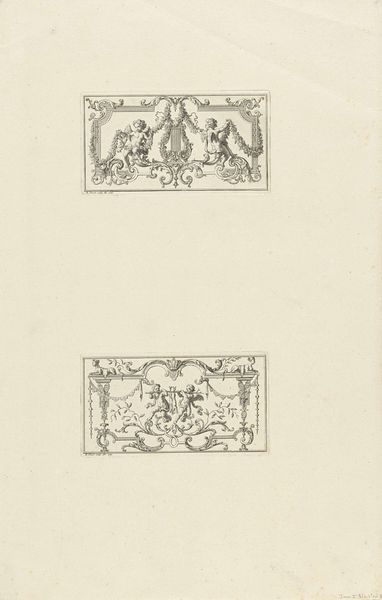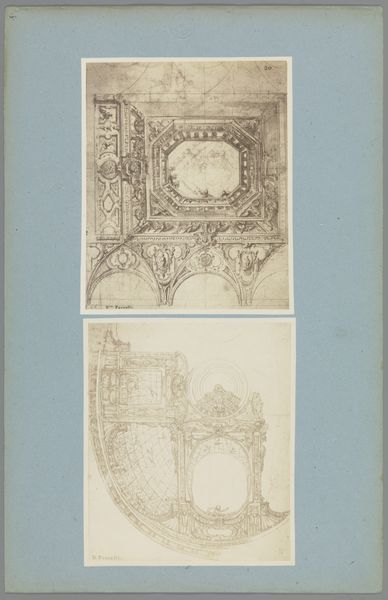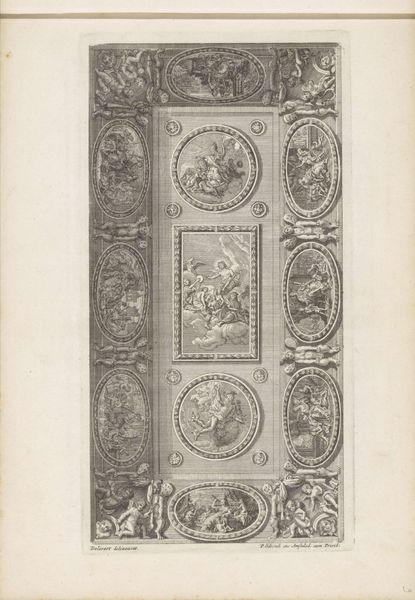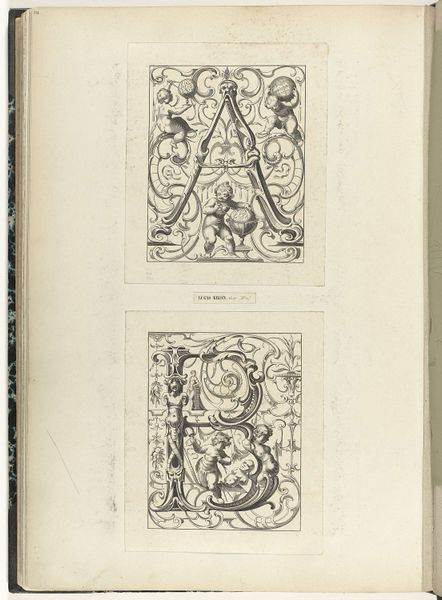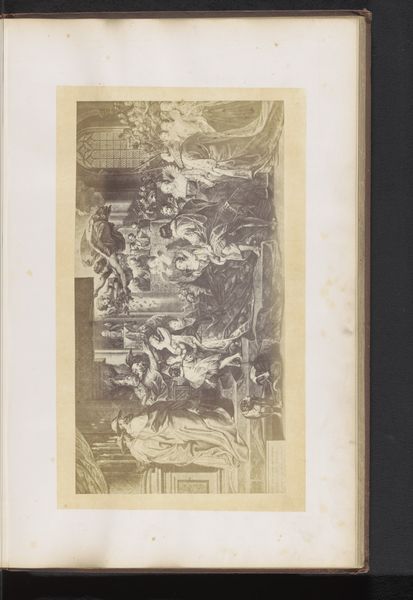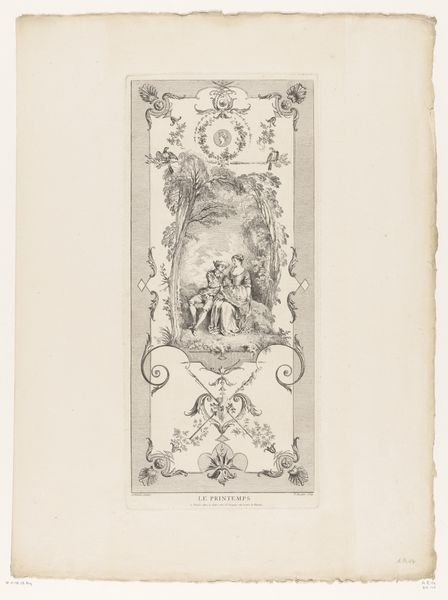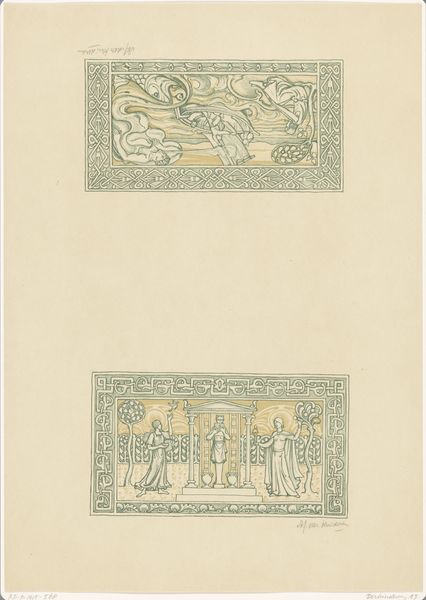
drawing, print, engraving
#
drawing
# print
#
figuration
#
line
#
genre-painting
#
engraving
Dimensions: height 418 mm, width 290 mm
Copyright: Rijks Museum: Open Domain
Curator: Here we have “Twee prenten met werkende putti,” or "Two Prints with Working Putti" by Eugen Neureuther, created sometime between 1866 and 1900. They appear to be engravings, showcasing incredibly detailed line work. What strikes you initially about this piece? Editor: I'm immediately caught by the... well, almost frenetic energy despite the classical cherubic forms. There’s this bizarre contrast between the playful putti and what looks like fairly strenuous, miniature labor. It’s as if someone dreamed up an alternate reality of classical art. Curator: Exactly! The prints depict putti, those often chubby, winged infants we associate with classical art, engaging in what seem like laborious industrial processes. In the first print, they're operating a press and furnace, while in the second, we see them occupied with grinding and perhaps even music-making. They're framed by decorative borders, emphasizing their confinement within these roles. Editor: This resonates with discussions around child labor and exploitation—issues particularly relevant during the period this piece was created. Are we to understand these putti as allegories for the working class, their cherubic innocence brutally yoked to the machinery of the Industrial Revolution? The placement inside decorative borders and the tiny legible fonts look like bank notes—funny. Curator: It's certainly a valid interpretation. I think Neureuther's prints function as wry commentary on societal changes and, more subtly, on art itself. The putti, traditionally symbols of idyllic leisure, are now cogs in a machine. It might suggest a loss of innocence or a shift in the artist's role in an industrial age. Editor: I wonder, too, about the subtle critique of the aestheticization of labor. Are these images inadvertently romanticizing the exploitation they depict? The beautifully rendered details and elegant compositions could almost distract from the darker implications of the scene, and that really has my activist alert rising. Curator: An important point. Perhaps Neureuther aims to create precisely that discomfort: forcing us to confront the dissonance between idealized forms and harsher realities. Editor: So, it challenges us to reconsider not just labor, but also representation, its ethics, its inherent limitations. Curator: Precisely. Editor: Well, I'm certainly going to be contemplating the industrial revolution differently now. It’s those angelic yet overworked putti that’ll stick with me! Curator: Indeed, and perhaps these little guys help us imagine what work will look like for us and for our children.
Comments
No comments
Be the first to comment and join the conversation on the ultimate creative platform.
